Dysregulation of macrophage PEPD in obesity determines adipose tissue fibro-inflammation and insulin resistance
- PMID: 35478031
- PMCID: PMC7617220
- DOI: 10.1038/s42255-022-00561-5
Dysregulation of macrophage PEPD in obesity determines adipose tissue fibro-inflammation and insulin resistance
Abstract
Resulting from impaired collagen turnover, fibrosis is a hallmark of adipose tissue (AT) dysfunction and obesity-associated insulin resistance (IR). Prolidase, also known as peptidase D (PEPD), plays a vital role in collagen turnover by degrading proline-containing dipeptides but its specific functional relevance in AT is unknown. Here we show that in human and mouse obesity, PEPD expression and activity decrease in AT, and PEPD is released into the systemic circulation, which promotes fibrosis and AT IR. Loss of the enzymatic function of PEPD by genetic ablation or pharmacological inhibition causes AT fibrosis in mice. In addition to its intracellular enzymatic role, secreted extracellular PEPD protein enhances macrophage and adipocyte fibro-inflammatory responses via EGFR signalling, thereby promoting AT fibrosis and IR. We further show that decreased prolidase activity is coupled with increased systemic levels of PEPD that act as a pathogenic trigger of AT fibrosis and IR. Thus, PEPD produced by macrophages might serve as a biomarker of AT fibro-inflammation and could represent a therapeutic target for AT fibrosis and obesity-associated IR and type 2 diabetes.
© 2022. The Author(s), under exclusive licence to Springer Nature Limited.
Conflict of interest statement
The authors declare no competing interests.
Figures
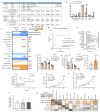
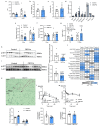
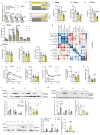
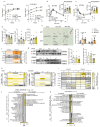
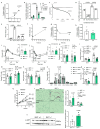
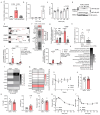


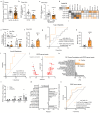

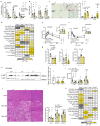
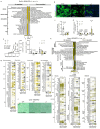
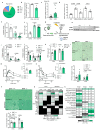
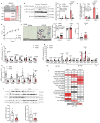

References
-
- Vidal-Puig A. Adipose tissue expandability, lipotoxicity and the metabolic syndrome. Endocrinol Nutr. 2013;60(Suppl 1):39–43. - PubMed
-
- Abdennour M, et al. Association of Adipose Tissue and Liver Fibrosis with Tissue Stiffness in Morbid Obesity: Links with Diabetes and BMI Loss after Gastric Bypass. J Clin Endocrinol Metab. 2014:jc20133253. - PubMed
Publication types
MeSH terms
Substances
Grants and funding
- MC_UU_12012/3/MRC_/Medical Research Council/United Kingdom
- 208363/Z/17/Z/WT_/Wellcome Trust/United Kingdom
- #098051/WT_/Wellcome Trust/United Kingdom
- DH_/Department of Health/United Kingdom
- MC_UU_00014/2/MRC_/Medical Research Council/United Kingdom
- RG/12/13/29853/BHF_/British Heart Foundation/United Kingdom
- MRC_MC_UU_12012/4/MRC_/Medical Research Council/United Kingdom
- 100574/Z/12/Z/WT_/Wellcome Trust/United Kingdom
- RG/18/7/33636/BHF_/British Heart Foundation/United Kingdom
- WT_/Wellcome Trust/United Kingdom
- MRC_MC_UU_12012/5/MRC_/Medical Research Council/United Kingdom
- G0000872/MRC_/Medical Research Council/United Kingdom
- MC_UU_00014/5/MRC_/Medical Research Council/United Kingdom
- MC_UU_12012/4/MRC_/Medical Research Council/United Kingdom
- MC_UU_12012/5/MRC_/Medical Research Council/United Kingdom
- R01 DK107786/DK/NIDDK NIH HHS/United States
- MC_UU_12012/2/MRC_/Medical Research Council/United Kingdom
LinkOut - more resources
Full Text Sources
Medical
Molecular Biology Databases
Research Materials
Miscellaneous

